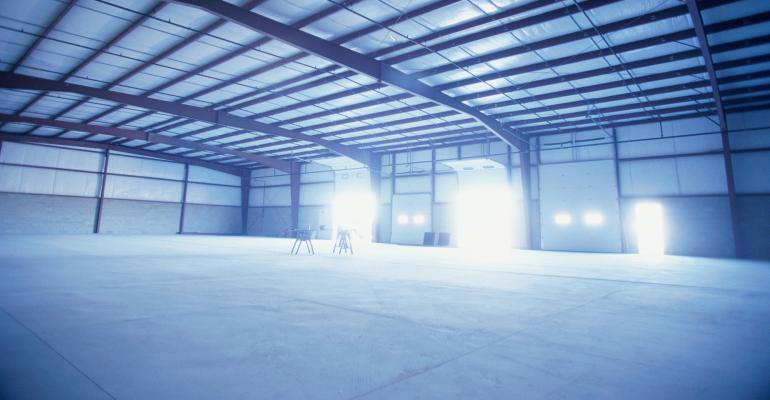Industrial real estate is weathering the COVID-19-related economic downturn better than many other sectors, due to acceleration in e-commerce during the quarantine, combined with increased demand for storage near ports as a wave of products arrived from China just as U.S. consumer demand declined.
“We’re seeing a surge of interest in industrial demand from investment groups that weren’t in the sector before,” says Chicago-based Peter Kroner, manager, U.S. capital markets, with real estate services firm JLL. He notes that prior to the pandemic retailers were systemically shifting toward a reduction in inventory and reinventing the retail experience. “The COVID environment catalyzed all this and caused traditional retailers that weren’t previously doing direct-to-consumer online sales to rethink the approach to their supply-chain strategy.”
As a result, investors traditionally focused on other real estate categories are now interested in industrial assets, and those already invested in the industrial sector are adding more properties to their portfolios, Kroner says. Family offices is one investor group in this new buyer pool seeking industrial opportunities, he notes.
While the hottest assets are “middle fairway”—distribution centers with 10- to 20-year leases and good-credit tenants, investors are also increasingly asking about value-add and development opportunities, according to Kroner. “We’re seeing a big pick-up in demand for last-mile assets.”
This typically involves small, older warehouse assets, but last generation office and retail centers are also being redeveloped ino industrial space, particularly in land-constricted urban markets. “We’re seeing failed malls abandoned or 80 percent vacant purchased by developers for redevelopment as distribution space, because they check all the boxes for e-commerce fulfillment,” Kroner says. The malls are often positioned near large consumer populations and have lots of parking and good freeway access.
While city fathers would normally be reluctant to rezone retail to industrial, as sales tax is a source of revenue for cities, Kroner suggests that they are generally willing to work with developers when vacancy is well over 50 percent. “The jobs have already been lost, and the tax dollars are no longer present.”
Al Pontius, San Francisco-based senior vice president and national director for office and industrial assets at real estate brokerage firm Marcus & Millichap, also reports seeing interest in industrial assets pick up, with investors in other product types now wanting to expand into industrial. The strongest interest continues to be for large assets with long-term leases and one or two credit-worthy tenants, as those properties are the easiest for lenders to underwrite.
However, that business challenges and uncertainty around COVID-19 going forward is making investors cautious in the short-term, Pontius notes. Industrial sales were up 12 to 14 percent in the first two months of 2020, but dropped by 30 percent in mid-March and even lower since then, according to John Chang, senior vice president of research services with Marcus & Millichap.
Industrial real estate will be more attractive in the long term as demand for industrial space increases due to COVID expanding the population of online shoppers and demonstrating a critical need for manufacturing safety, especially for medical supplies and pharmaceuticals, says Pontius. While retail sales dipped 7 percent in March, online sales rose 8 percent, according to Chang.
High demand for industrial space in markets with tight vacancy may also spark increased development of multi-level industrial assets over time, Pontius notes.
While new product coming on-line in the sector is down from 2018 and 2019 levels, Chang reports that vacancy is expected to rise by 5.5 to 7.0 percent this year. New product completions will add 210 to 260 million sq. ft. of space to the market, but he notes that the vast majority of those projects will be large-format facilities.
Contending that over the long term, industrial values will continue to rise, Kroner says that rising vacancy could benefit investors. For example, spec developers may be willing to make price adjustments on new shell projects if they have not signed a tenant, rather than carry the construction loan on the books.
The manufacturing sector in both the U.S. and Mexico might also benefit from COVID-19, as U.S. companies re-shore production or near-shore it in Mexico, Kroner adds. “What’s happening is a multi-tiered approach, with companies establishing a second operation in the Americas for reliability,” he says.
For example, an existing rail system from Mexico to Kansas may encourage U.S. companies with manufacturing operations in China to near-shore production in Mexico because infrastructure needed to get products to U.S. markets is already in place, and they can save on labor costs.
COVID might also be a game-changer for local and regional banks, which prior to the pandemic couldn’t make the margins work to finance industrial construction, Kroner notes. This may change as the pandemic restrictions limited larger banks’ ability to visit construction sites, providing local and regional banks an opportunity to compete for industrial construction loans.

